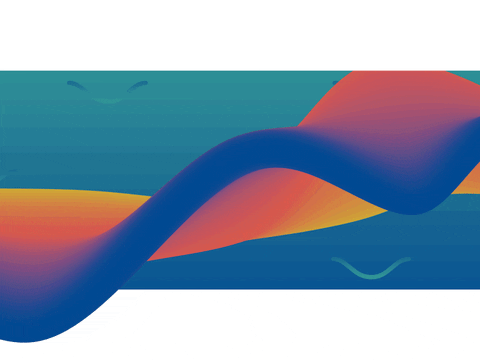An area of human design that is rich with powerful information yet so challenging to find information around is the arrows (we call these variables.)
What in the world are variables?
The variables are known as the four transformations, as they map the transformation we go through as we optimize our bodies and minds. The variables carry meaning based on the direction the arrows face as well as in the layers found underneath the arrows. They are a world unto themselves and it took me many years of a traditional human design education to finally access information on how to work with them. (This is something we dive deeply into in our course on human design, Blueprint Pro.)
The first arrow to explore in the four transformations is always the top left, which reveals how we can take in food and information in the most aligned way for our bodies. When we eat in alignment with our human design, we tend to have clearer minds and easier digestion, and we simply feel better. Today, I wanted to share a few notes on what the top left arrow says about digestion.
The first piece to look at in your chart is whether the top left arrow is facing left or right.
- If the arrow is facing left, you may find you thrive when you keep yourself well-nourished and well-hydrated throughout the day and don’t go too long without eating, e.g., eating regular meals, eating when you wake up, having a snack before a meeting. Fasting may not feel natural to you.
- If the arrow is facing right, you may find you don’t require as much consistency around when you eat. Fasting may feel natural to you. What’s most important is that you eat when you’re hungry and drink when you’re thirsty, even if it’s 8am one day and 12pm the next.
The next piece to look at is a deeper layer called digestion that lies underneath the top left arrow. If you don’t yet know your digestion, you can look it up here.
Possibilities for digestion include: Consecutive, Alternating, Open, Closed, Hot, Cold, Calm, Nervous, High, Low, Direct, Indirect.
So, what in the world do these words mean?
We are going to highlight a few pieces of each digestion below, but know there is so much more to each digestion than what we are including below. This is just a starting point.
If you have Consecutive or Alternating as your digestion, what’s most important is simplicity in what you eat.
Rather than overwhelming your system with many ingredients, it’s best to take in one ingredient at a time (e.g., sweet potatoes, then spinach, then fish). The simpler the meal or drink, the better or more energized you’ll feel.
Some tips to experiment with this digestion:
- Eliminate excess ingredients
- Give away mixed foods in your kitchen and replace them with simple, whole foods
- Practice simplicity in what you consume
If you have Open or Closed as your digestion, you may find you’re naturally picky about your food.
Your system is designed for repetition. With meals, it’s best to stick with what you love and eat food that brings you pleasure. If you find something you love, stick with it until you feel inspired to change up your routine. You may find you love eating with the seasons.
Some tips to experiment with this digestion:
- Pay attention to the foods you instinctively reach for
- Set a menu you know you love
- Take your favorite foods with you when you travel
If you have Hot or Cold as your digestion, you may find you are super sensitive to the temperature of your food.
Those with Hot may find their system is more relaxed and takes in food more easily when food is warm, e.g., food off the stove, soup or tea. Those with Cold may find their system more easily takes in food when they consume cool food that is below body temperature, e.g., salads, raw food, smoothies or food directly out of the fridge. Both types need lots of liquids flowing through them.
Some tips to experiment with this digestion:
- Pay attention to how hot or cold food feels in your body
- Let cold food warm up and reach room temperature before eating (for Hot)
- Let hot food or drinks cool down before eating them (for Cold)
If you have Calm or Nervous as your digestion, you may find you are super sensitive to the energy levels around you when you are nourishing yourself, whether it’s calm energy or exciting energy.
Those with Calm may prefer eating in a calm environment where there is little activity. Eating is meant to feel peaceful for them; they want their nervous system to be relaxed. Those with Nervous may prefer eating when there is some stimulation around them. This could look like moving before or after eating, eating standing up or on the go, or watching or listening to something while eating. It’s healthy for their digestive system to be revved up.
Some tips to experiment with this digestion:
- Pay attention to the energy levels around you while eating
- Reflect on what makes you feel calm while eating and invest your energy in those spaces or practices (for Calm)
- Create rituals around eating (for Calm)
- Practice moving before or after a meal (for Nervous)
- See how it feels to eat on the go (for Nervous)
If you have High or Low as your digestion, you may find you are sensitive to the acoustics when you eat, whether it’s high or low.
What’s most supportive for your digestion is for your ears to be pleased by what you’re listening to while you eat. This may mean enjoying the music, the sound of a restaurant or people’s voices.
Some tips to experiment with this digestion:
- Pay attention to the sounds you’re listening to while you’re eating
- Turn on music you love when you’re eating
- Leave a space if you don’t like the sounds
- Let people know if there’s a conversation you don’t want to have while eating
If you have Direct or Indirect as your digestion, you may find you are most sensitive to the time of day you eat, whether it’s when the sun is up or down.
It’s less about what you eat and more about when you eat. Those with Direct may find they digest best when the sun is up. This may look like eating their heaviest meals when the sun is up and sticking to lighter foods once the sun is down. Those with Indirect may find they digest best when the sun is down. This may look like eating lighter meals during the day and eating their biggest meals at night. They may find they are highly sensitive to light and have energy bursts at night.
Some tips to experiment with this digestion:
- Prioritize eating a good breakfast (for Direct)
- Eat near a window or outside when you can (for Direct)
- Do your best to not go to bed hungry (for Indirect)
- Do not make yourself wrong for wanting to eat later the day (for Indirect)
…And this is just the beginning! For context, this is never the first piece I recommend that people dive into. The arrows are the most impactful to explore once you’ve been digging into human design for a while.
If you feel inspired, I encourage you to look yours up and begin experimenting if it feels aligned for you. And if you feel ready to dive deep into all things human design, you can learn more about the variables and all things human design in our course.





















